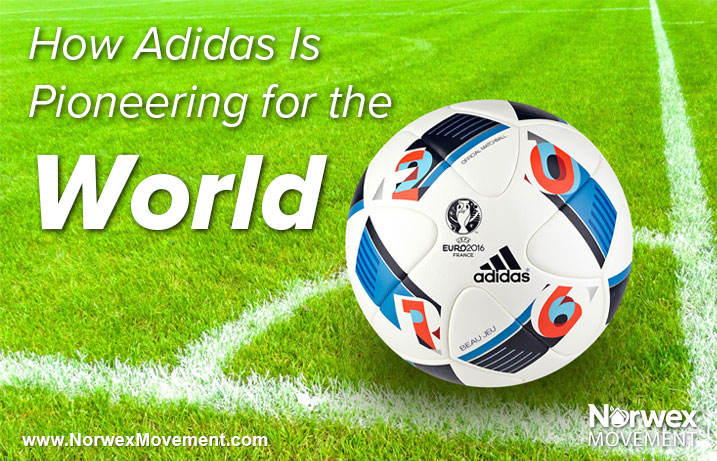

With less than 20% of plastic being recycled globally, it’s no surprise that 18 billion pounds of plastic waste ends up in the ocean each year. These shocking statistics have encouraged many multinational corporations to become increasingly focused on green initiatives. In other words, the problem is now looking for the solution.
McDonald’s aims to replace plastic foam cups with recycled ones by the end of 2018, and Starbucks has already started implementing alternatives to plastic straws. The newest corporate power to jump on the bandwagon is Adidas. The German sportswear company has pledged to phase out the use of virgin plastic by 2024. As the largest sportswear manufacturer in Europe and the second largest globally, superseded only by Nike, this is a considerable step in the right direction. As well as making a significant international impact on plastic pollution, hopefully Adidas will also prompt smaller corporations to become greener.
So what does this promise entail for Adidas in terms of manufacturing? First, polyester—a popular textile in the sportswear industry—will no longer be produced from scratch. In simple terms, polyester is plastic that has been melted, stretched and spun in a process that mimics a spider making a web. Adidas is on a mission to create polyester by repurposing previously used plastics, such as bottles or pre-existing polyester-based clothes. Polyester is largely non-degradable, so repurposing it is one way to keep it from entering landfills. This is no new concept; in fact, the outdoor-clothing company Patagonia has created fleece jackets from polyester using 86 million plastic bottles. And one company we all know and love now offers a wide variety of high-quality microfiber products created from recycled plastic materials. Adidas has announced that their 2019 spring and summer line will contain 41% recycled polyester; by 2024 this percentage should rise to 100.
The company’s green approach doesn’t end in the factory, as Adidas has also started eliminating virgin plastics from its offices, retail outlets and distribution centers. This switch will save an estimated 40 tons of plastic per year. It also intends to increase its sale of “Parley” shoes by fivefold. These shoes, one million of which were sold in 2017, are made from ocean-bound plastic. Fashionably eco-conscious, they also boast an over 90% recommendation rate by consumers and support the growing demand for eco-friendly goods.
Adidas is one of many powerful companies working toward a sustainable future, but it only takes one person to make a difference. Small changes such as carrying a reusable shopping bag can help cut down on single-use plastic carriers. Cooking meals at home rather than ordering takeout helps minimize plastic containers and also saves money. Simply saying no to plastic straws is a small action that can have global effects.
Resources:
YESSS! SO excited about this!
I’ve noticed the change in the cups at McDonald’s. No more Styrofoam….way to go!
Hard to believe people are NOT interested in trying to reduce the amount of plastic being used.
In many cases, it’s cheaper to produce new plastic than to recycle/reuse old plastic. We have to educate consumers so that more of the manufacturers will begin to see that the cost isn’t going to compare to the lost business when people start shopping more green, b/c they are aware of the plastic island in the ocean. I wasn’t – until my upline introduced it to me. Before I started working with Norwex, I NEVER gave a second thought to single use packaging. I figured it wasn’t my problem anymore once it was out of my house. I have always recycled… but how do we know what we recycle from our house is actually able to be recycled and stays out of the landfill? Without education, we don’t… and without education, a lot of people are not aware of the plastic issue.
This is awesome!
Amy – love the article! Is there a reason that the “90% recommendation” is formatted with strikethrough instead of just underlined? 😉
Yes, this is the way to go for sure.